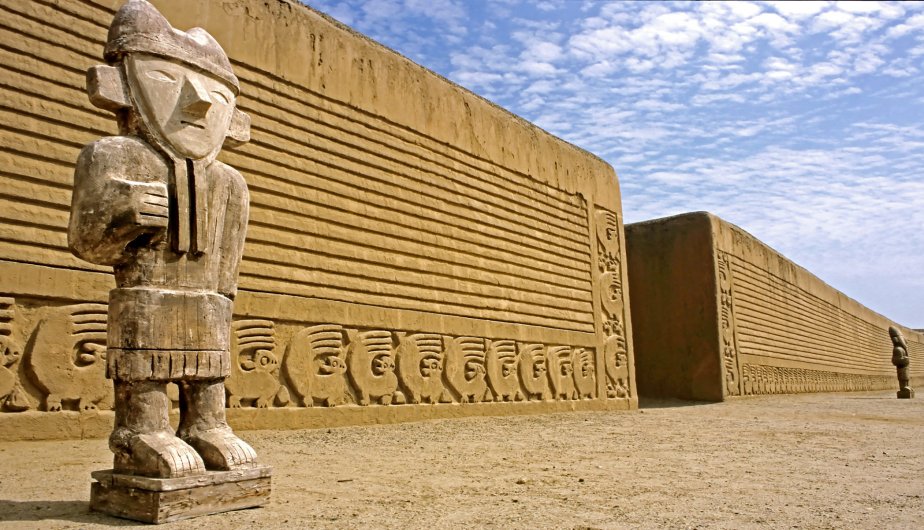CHAN CHAN

Exploring Chan Chan: The Largest Adobe City of Pre-Columbian America
Nestled near the coastal city of Trujillo in northern Peru, Chan Chan stands as one of the most significant archaeological sites of the ancient Americas. As the capital of the Chimú civilization, which thrived from around 900 to 1470 AD, Chan Chan is renowned for its vast adobe structures and intricate artistry. But what exactly is Chan Chan, and does it qualify as a megalithic site? Let’s delve into its history, architecture, and significance.
Chan Chan was founded around 900 AD and served as the political, economic, and cultural center of the Chimú civilization. At its height, it is estimated that the city housed approximately 60,000 inhabitants. The Chimú people were skilled artisans and builders, and their influence extended over a large portion of the northern coast of Peru, even rivaling the Inca Empire before being absorbed by it in the 15th century.
The city’s strategic location near the Pacific coast facilitated trade, allowing the Chimú to exchange goods with other cultures. As a result, Chan Chan became a bustling hub of commerce and craftsmanship.
Architectural Features

Chan Chan is remarkable for its vast area, covering about 20 square kilometers (around 7.7 square miles). The city is characterized by its large adobe structures, which include residential quarters, temples, and administrative buildings. The most iconic feature of Chan Chan is its high walls, some reaching up to 8 meters (26 feet) in height, designed to protect the inhabitants from potential invasions.
While not built with stone like other megalithic sites, Chan Chan’s adobe architecture showcases the ingenuity of its builders. The use of mud bricks, or adobe, was well-suited to the region’s climate and readily available materials. The walls of the buildings are often adorned with intricate friezes and decorative motifs, featuring geometric patterns and representations of animals, such as birds and fish, which hold cultural significance.
The city was meticulously planned, with distinct sectors serving different purposes, including residential, religious, and administrative areas. The layout includes a series of interconnected compounds, each enclosed by thick walls. This design not only provided privacy but also facilitated community interaction.
Is Chan Chan a Megalithic Site?
The term “megalithic” typically refers to structures built with large stone blocks, often associated with monuments or ceremonial sites. In contrast, Chan Chan is primarily constructed from adobe, a material made from earth and organic materials, rather than stone. Therefore, while Chan Chan is an impressive architectural feat and one of the largest ancient cities in the Americas, it does not qualify as a megalithic site in the traditional sense.
However, the scale and complexity of Chan Chan’s construction certainly reflect a high degree of engineering skill and cultural achievement. The city’s impressive adobe walls and expansive layout demonstrate the architectural prowess of the Chimú civilization.
Cultural Significance
Chan Chan is not just an architectural marvel; it also holds deep cultural and historical significance. The site reflects the social organization, religious practices, and daily life of the Chimú people. Excavations have revealed a wealth of artifacts, including pottery, textiles, and tools, which provide insights into their customs, trade practices, and artistic expressions.
The site was designated a UNESCO World Heritage Site in 1986, highlighting its importance as a cultural treasure. Preservation efforts are ongoing, as erosion and climate change pose significant threats to the ancient structures.
Chan Chan stands as a testament to the ingenuity and sophistication of the Chimú civilization, reflecting a unique blend of architectural skill and cultural depth. While it may not fit the traditional definition of a megalithic site, its impressive scale and historical importance make it one of the most fascinating archaeological sites in Peru. For those interested in ancient cultures, architecture, and history, a visit to Chan Chan offers a remarkable journey into the past, where the echoes of a once-great civilization continue to resonate in the desert sands.
